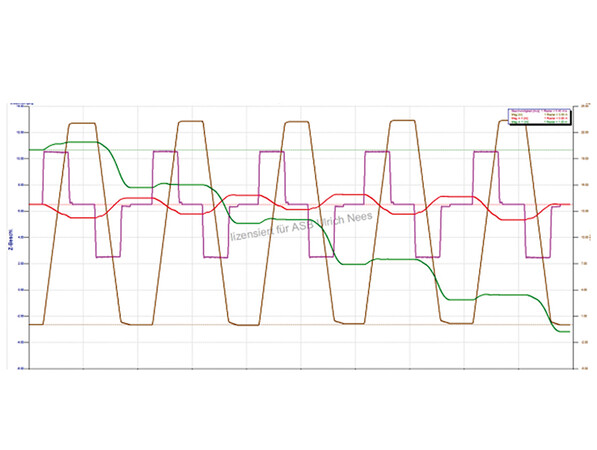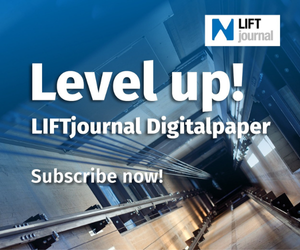Reduction of prestressing force in screw fittings
The last article in this series considered the areas of use of elastic bearings. This one deals with professional mounting.
By Ulrich Nees and Jan König
In lifts without machine rooms, the motors/machines are placed on elastic bearings to isolate structure-born emissions. Elastic bearings, made of plastic, decrease in volume during operation and as a result of the loading. This decrease is particularly disadvantageous for the installation height.
If the installation height of the elastic bearing decreases, a structure-borne noise bridge can occur between the damping masses. Moreover, the pretensioning force of screw connections can decrease considerably. This reduction can above all be observed in EL3 bearings if the machine "tilts" during acceleration and deceleration of the car.
Independent loosening of screw connections is equivalent to complete or partial loss of prestressing force. In addition, this is accelerated by low frequencies. The loss of prestressing force increases the structure-borne noise emissions in the lift well wall significantly and can result in the screw breaking.
Series of standards on locking elements withdrawn
During experiments on existing lifts, the observation was made that screw connections partially loosened under dynamic axial tensile loading. This was due to the reduction in the frictional contact through radial sliding motion between the thread flanks (screw – nut) and low frequencies emitted by the machine.
In 2003, a series of standards on locking elements were withdrawn. They belonged to the categories "anti-rotation locking elements" and "settling locking elements" or were in practice incorrectly assigned.
This involved the following locking elements:
– Lock washers according to DIN 128 and DIN 6905
– Spring washers according to DIN 137 and DIN 6904
– Serrated lock washers according to DIN 6798 and DIN 6907
– Toothed lock washers according to DIN 6797
– Tab washers according to DIN 93, DIN 432 and DIN 463
– Screw safety cups according to DIN 526
– Self-locking nuts according to DIN 7967.
Locking measures against loosening of screw connections
 Diagram 1: Shifting of the car across the conveyance height. Photo: © Ulrich Nees
Diagram 1: Shifting of the car across the conveyance height. Photo: © Ulrich NeesWhat locking measures exist against the loosening of screw connections? In view of the settling and/or creep factors, the pretensioning force decrease they produce must be kept as low as possible. This is usually facilitated by increasing the compliance of screws or tensioned parts, for example, through a spring lock washer.
Anti-rotation locking elements reduce independent loosening even under extremely dynamic loading. They maintain at least 80 percent of the original pretensioning force in the screw fittings. Effective locking measures are for example combinations of screws, nuts or washers/lock washers with locking teeth or locking ribs.
Such screws, nuts and washers are currently not standardised. Another effective way of preventing loosening is bonding in the thread. Micro-encapsulated adhesives (1) or anaerobic hardening liquid adhesives (2) are suitable for this.
Massive effects on the travel behaviour
 Diagram 2: Shifting of the car across the conveyance height. Photo: © Ulrich Nees
Diagram 2: Shifting of the car across the conveyance height. Photo: © Ulrich NeesIf the pretensioning of the screws is reduced in combination with the elastic bearing [EL 3], this causes shifting of the car (red and green line) across several trips through the lift well as diagram 1 and 2 show. Axial loads, the "tilting" of the machine and extreme operationally caused loading of the screw connections have a direct effect on the position of the car in the lift well.
The change in the car position caused as a result to the guide rails has massive effects on the travel behaviour and statics of the lift, which generates higher structure borne sound emissions to the lift well wall.
As this article shows, professional mounting as well as maintenance have a decisive effect on the noise level of lifts. In the next article, we will return once again to the requirements of DIN 8989.
Jan König is the proprietor of the engineering firm (VID) Ing4Lifts.
Ulrich Nees is the proprietor of "Aufzug-Systeme + Beratung Ulrich Nees".
(1) DIN 267-27:2009-09
(2) DIN EN ISO 10123:2019-10
More information: ing4lifts.de
aufzugsystemeberatung.de

























Write a comment